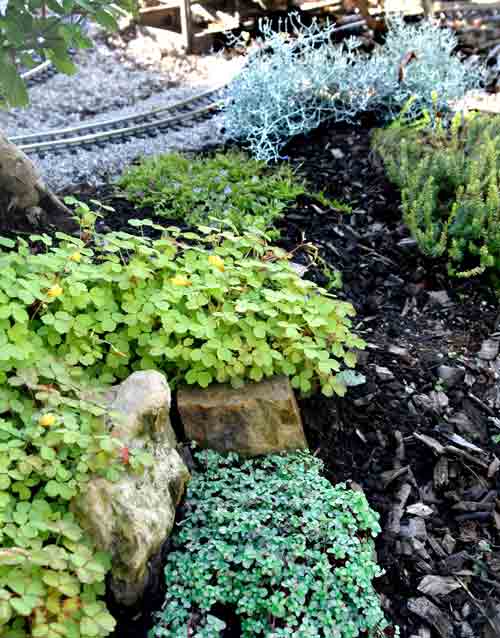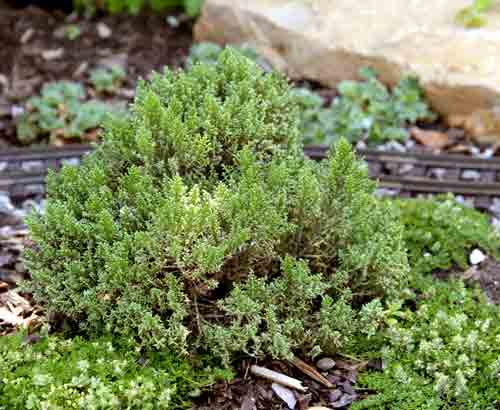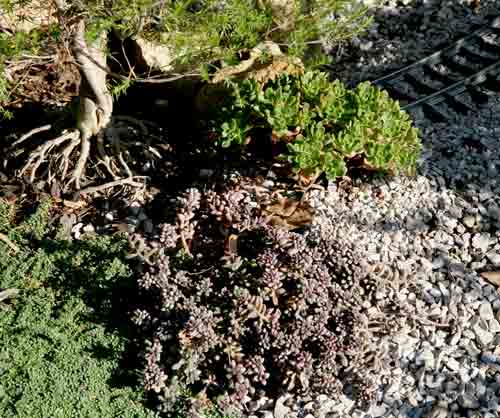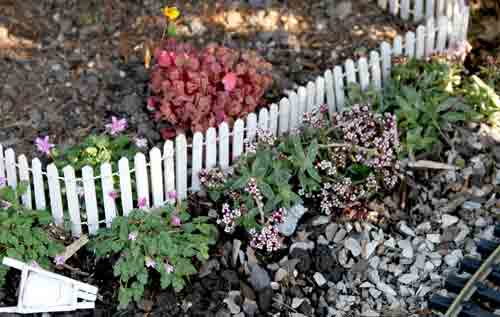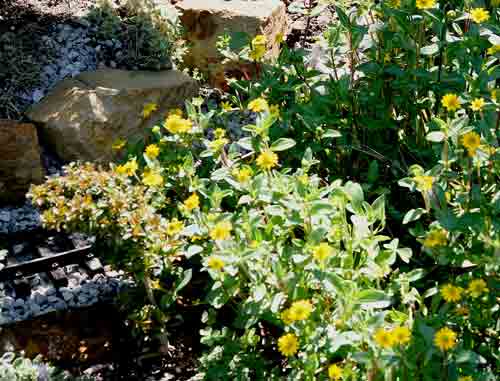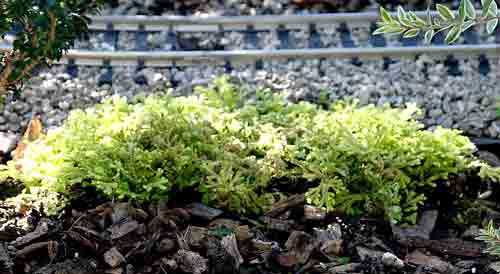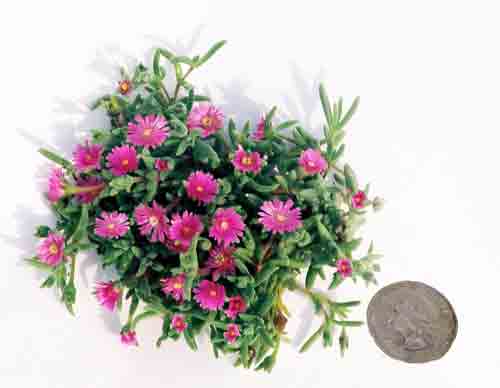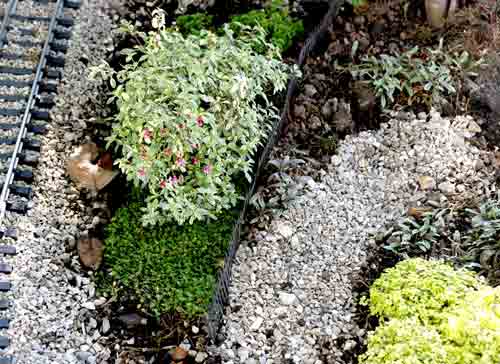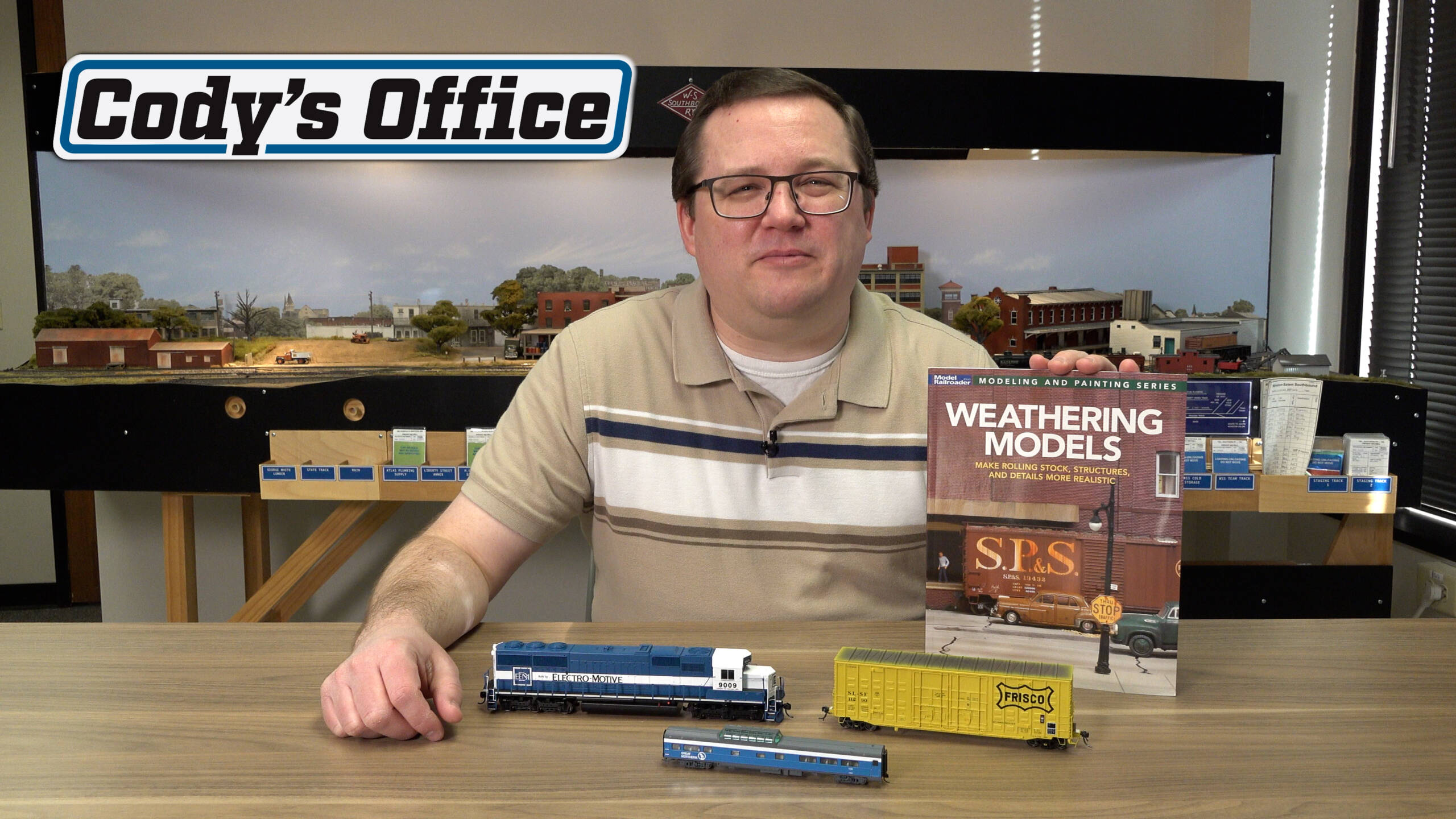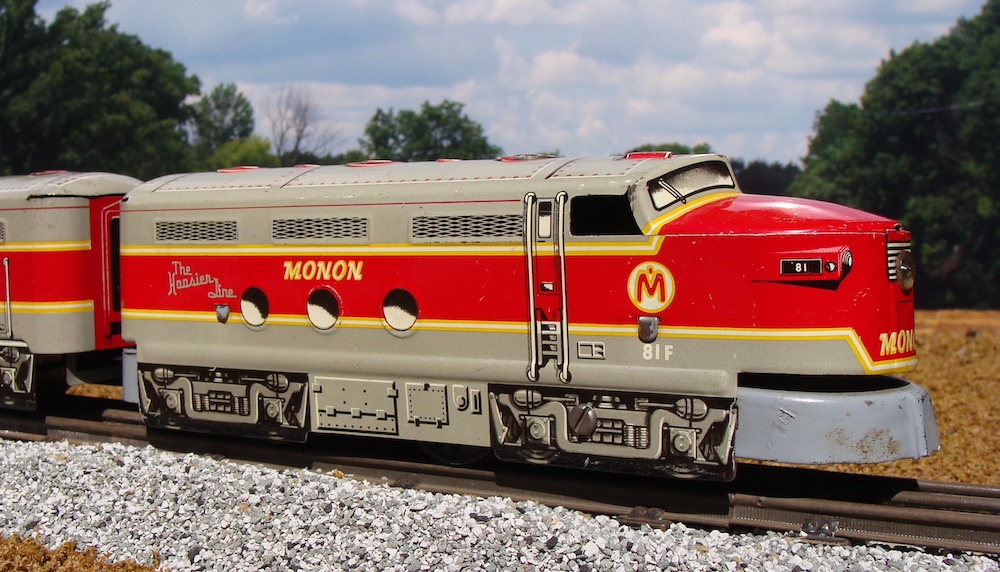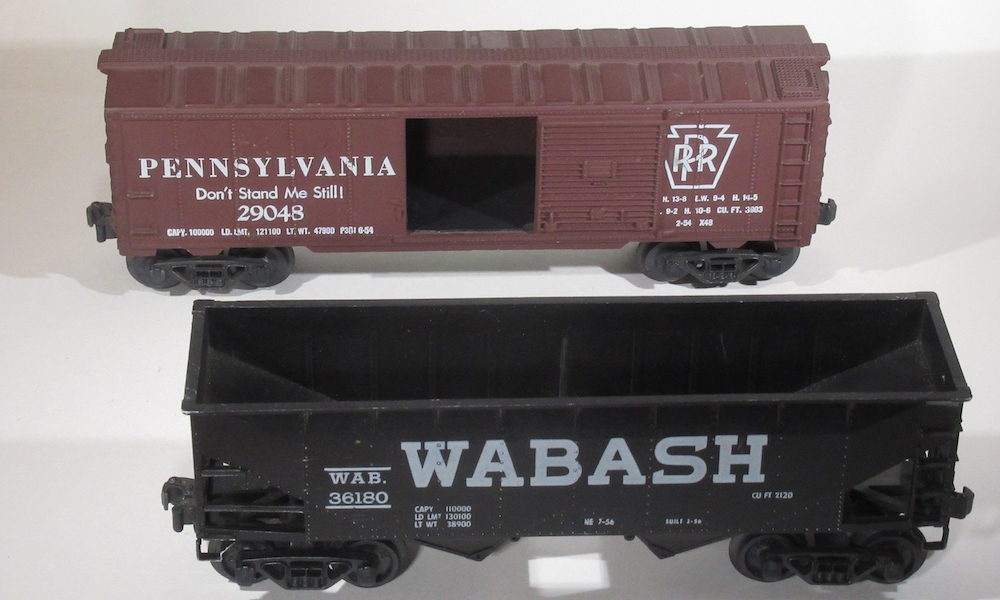All of these plants are suitable for USDA Hardiness Zones 9 and 10. Other factors to consider, besides cold hardiness, might include whether you will use dry-site plants (plants from the Mediterranean area, for instance), plants suitable for moist, humid conditions (plants originating in jungle-like conditions), plants found in shade, or bright sun, etc. I’ll list some of these characteristics along with the plant descriptions.
Sun lovers
Irish eyes aeonium (Aeonium sedifolium) would make a bright-green spot in a desert landscape. It has succulent leaves on woody stems and is quite tolerant of drought conditions. This perennial grows to 6″ tall in Zones 9 and 10, making a somewhat stiff, dense bush. In the north it can be overwintered as a house plant.
Tiny bush jade plant (Monanthes subcrassicaulis) is another succulent preferring dry conditions. Growing 4″ tall and spreading up to 12″, it has 1/4″, fat, dark-green leaves that turn almost black in full sun. The small bush it forms sparkles with the tiniest yellowish flowers in mid-summer and contrasts nicely with the aeonium above. It also is a perennial in the south and can be overwintered up north indoors in a container.
One of the prettiest plants to grow around your miniature houses and gardens is double rose erodium (Erodium chamaedryoides ‘Dark Eyes’). Related to true geraniums, this sun lover rarely stops showing off its bright pink, red streaked, fully double flowers in Zones 9 and 10. It prefers dry, sandy loam in a sunny spot, but will tolerate a little shade. In colder climes it acclimates to indoor conditions and can be kept in a container all winter.
There are some little gems among the ice plants, including Drosanthemum hispidum ‘Tiny Purple’, one of the very smallest, and the M&Mini series introduced by Mulberry Creek Herb Farm (Delosperma rogersii ‘Mulberry Mini-Purple’, ‘-Apricot’, ‘-Sunshine’, and ‘-Wine’). Growing 2-3″ tall, these little ground huggers spread to about 6″ wide. They revel in full sun and sandy loam and are covered with their respective colorful blooms almost year around in warmer Zones.
For a lovely, fine-leaved bush that grows well in hot, sunny, dry areas, you should consider Boughton Dome hebe (Hebe cupressoides ‘Boughton Dome’). It will grow where conifers succumb and looks like a little evergreen tree.
Creeping zinnia (Sanvitalia x ‘Golden Aztec’) would make a very convincing field or patch of miniature sunflowers in the countryside of your railroad. It is a tough little annual that grows 5″ tall and will bloom for the entire growing season. It likes hot, dry conditions, just like its full-sized counterparts. It can be purchased grown in a container or started from seed (indoors in March or April in the north) and planted outside when the ground warms up.
In sun or part sun, tiger jade plant (Crassula picturata) is a real looker, with dime sized, shield shaped, dark-green leaves, spotted and striped in black. This makes the perfect background for its red flower buds, opening to a pale pink-and-white in early summer. Like its succulent siblings, it prefers a somewhat dry, sandy-loam soil. As a bonus, tiger jade plant will tolerate partial shade. Folks in the north can enjoy this beauty as a houseplant in the winter, then find a focal spot to show it off in the sgarden in the summer.
Shady characters
If your railroad garden has shady or partially shady areas, there are several choice plants that you can use to highlight those spots. One of the nicest is zinfandel oxalis (Oxalis vulcanicola). When grown in full shade, this little “three-leaved clover” plant is colored a lovely charteuse; but give it a little sun and it lives up to its name by turning a striking wine red. It grows 2-3″ high in its preferred habitat of moist, organic soil. Dime-sized yellow flowers give an additional sparkle to this diminutive, perennial groundcover when grown in warmer regions.
Trailing blue angel pilea (Pilea sp.) is an uncommon groundcover, with its silver streaked, pea-sized leaves. It is made even more striking by its tiny, rust-red blooms and reddish stems. Given moist soil in partial shade, it grows 1″ tall and spreads readily to make a nice groundcover. Blue angel pilea could make a tidy houseplant in the north.
Variegated Lottie Hobby fuchsia (Fuchsia ‘Variegated Lottie Hobby’) is a colorful variant of its plain-Jane parent. If you want something to lighten up a shady spot, this one will do the job admirably. The entire plant sparkles with white-edged green leaves and contrasting fuchsia-red dangling flowers, blooming almost non-stop all year in the south. Fuchsias prefer moist, organic soil in partial shade; however, they will tolerate several hours of morning sun as long as they get afternoon shade. They will also tolerate full shade, but may not bloom as profusely. Slowly growing up to 18″ high, they can be easily trimmed into spectacular little trees. They overwinter well indoors, so those of us who live in Zones with winter freezes can, with a little extra effort, also enjoy these gems in our railroad gardens.
Lastly, here’s one that even some of you northern garden railroaders can try. Golden spikemoss (Selaginella brownii ‘Aurea’) will survive winters as far north as Zone 5, given good siting in a protected area. I have grown a specimen that has come through two average northern Ohio winters with only spotty damage. In warmer regions it spreads steadily to make a bright-green groundcover growing just 1/2″ tall. Give it part shade to part sun in moist, organic soil.
So, for all you southern garden railroaders, enjoy the bounty that year-round growing conditions can produce.
Mulberry Creek Herb Farm (and miniatures)
www.mulberrycreek.com
Arrowhead Alpines
www.arrowheadalpines.com





